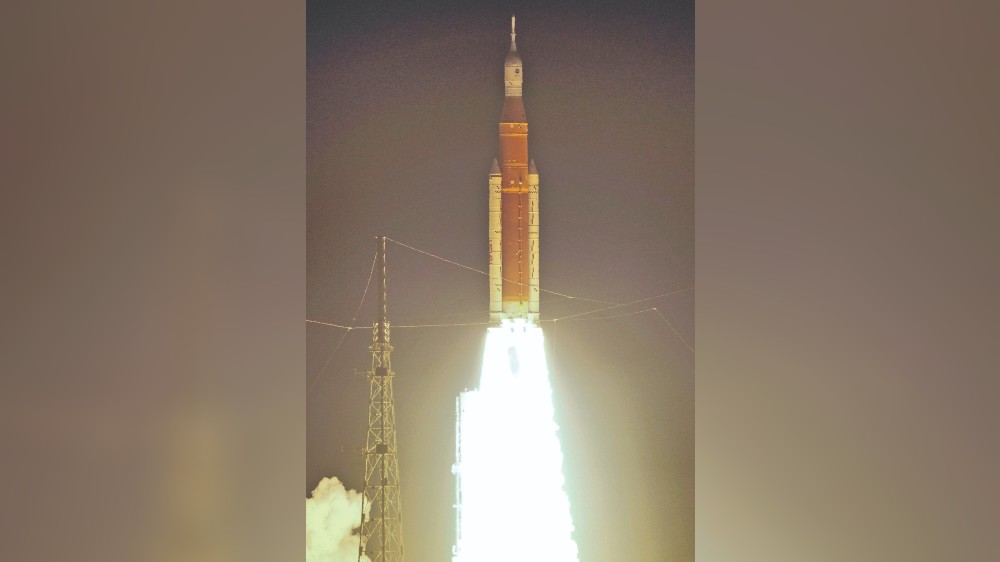50 yrs after Apollo, mighty Artemis heads to Moon
If all goes well during the three-week flight, the crew capsule will be propelled into a wide orbit around the moon and then return to Earth with a Pacific splashdown in December.

CAPE CANAVERAL: NASA’s new moon rocket Artemis I blasted off on its debut flight with three test dummies aboard on Wednesday, bringing the US a big step closer to putting astronauts back on the lunar surface for the first time since the end of the Apollo programme 50 years ago.
If all goes well during the three-week flight, the crew capsule will be propelled into a wide orbit around the moon and then return to Earth with a Pacific splashdown in December.
After years of delays and billions in cost overruns, the Space Launch System rocket thundered skyward, rising from Kennedy Space Center on 8.8 million pounds (4 million kilograms) of thrust and hitting 100 mph (160 kph) within seconds. The Orion capsule was perched on top and, less than two hours into the flight, busted out of Earth’s orbit toward the moon.
“It was pretty overwhelming,” said NASA Administrator Bill Nelson. ”We’re going out to explore the heavens, and this is the next step.” The moonshot follows nearly three months of vexing fuel leaks that kept the rocket bouncing between its hangar and the pad. An estimated 15,000 people jammed the launch site, with thousands more lining the beaches and roads outside the gates, to witness NASA’s long-awaited sequel to Project Apollo, when 12 astronauts walked on the moon from 1969 and 1972.
Cheers accompanied the rocket as it rode a huge trail of flames toward space, with a half-moon glowing brightly and buildings shaking.The liftoff marked the start of NASA’s Artemis lunar-exploration program, named after Apollo’s mythological twin sister.
The space agency is aiming to send four astronauts around the moon on the next flight, in 2024, and land humans there as early as 2025. “For the Artemis generation, this is for you,” launch director Charlie Blackwell-Thompson called out, referring to all those born after Apollo. She later told her team: “You have earned your place in history.”
The 322-foot (98-meter) SLS is the most powerful rocket ever built by NASA, with more thrust than either the space shuttle or the mighty Saturn V that carried men to the moon. A series of hydrogen fuel leaks plagued the summertime launch attempts as well as countdown tests.
Visit news.dtnext.in to explore our interactive epaper!
Download the DT Next app for more exciting features!
Click here for iOS
Click here for Android



